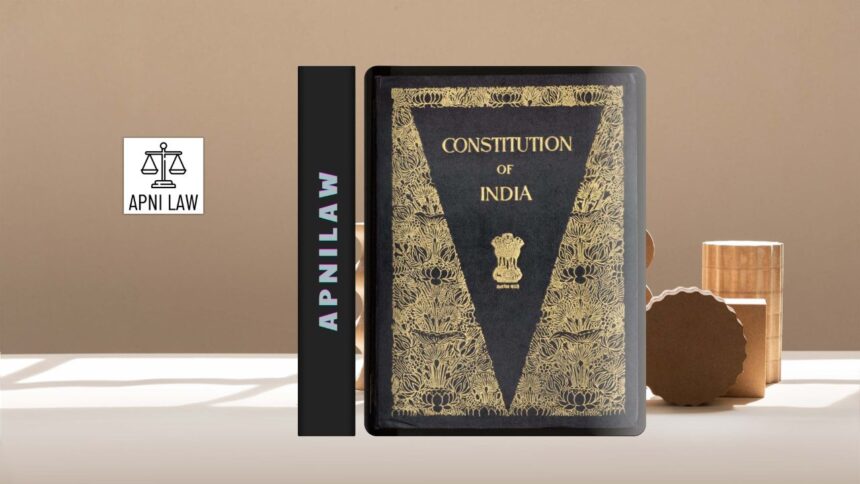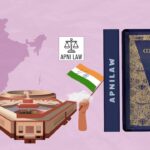Introduction
Indian Polity is one of the most scoring and conceptual areas in the UPSC Civil Services Mains Examination. It tests how deeply an aspirant understands the Constitution, governance, political dynamics, and the evolving nature of democracy in India.
Unlike the Prelims, which focus on factual questions, Mains requires analytical and opinion-based answers. Therefore, studying previous year Polity questions helps aspirants identify important themes and learn the art of structured writing.
This article provides selected UPSC Polity Mains previous year questions along with model answers, designed to help you understand both the content and approach expected by UPSC examiners.
Section 1 – Constitutional Framework and Basic Structure
Q1. (UPSC 2022) Explain the doctrine of basic structure of the Constitution. How does it ensure the balance between Parliament’s power to amend and judicial review?
Answer:
The Basic Structure Doctrine was evolved by the Supreme Court in the Kesavananda Bharati v. State of Kerala (1973) case. The Court held that while Parliament has wide powers to amend the Constitution under Article 368, it cannot alter its basic framework.
The doctrine ensures that features like sovereignty, democracy, secularism, federalism, and rule of law remain untouched. Thus, even though Parliament can amend, the judiciary retains the power to strike down amendments violating these principles. This balance maintains the supremacy of the Constitution and prevents its misuse by transient political majorities.
Q2. (UPSC 2021) Discuss the significance of the Preamble in the interpretation of the Constitution of India.
Answer:
The Preamble reflects the ideals and vision of the Constitution. It declares India to be a Sovereign, Socialist, Secular, Democratic, and Republic. Although it is not enforceable in a court of law, it serves as a guiding light for constitutional interpretation.
In Kesavananda Bharati (1973), the Supreme Court held that the Preamble forms part of the Constitution. Later, in LIC of India v. Consumer Education and Research Centre (1995), the Court used the Preamble to interpret social justice as a constitutional goal. Therefore, the Preamble is both the spirit and philosophy of the Constitution.
Section 2 – Fundamental Rights and Directive Principles
Q3. (UPSC 2020) “Fundamental Rights and Directive Principles of State Policy are complementary to each other.” Discuss.
Answer:
Fundamental Rights (Part III) ensure civil and political freedoms, while Directive Principles (Part IV) guide the State toward social and economic justice. Although they differ in enforceability, both aim to establish a welfare state.
In Minerva Mills v. Union of India (1980), the Supreme Court held that harmony between Fundamental Rights and Directive Principles is essential. Rights without social justice are meaningless, and directives without enforceable rights are ineffective. Therefore, together they form the core of constitutional governance.
Q4. (UPSC 2019) Right to Privacy is protected as an intrinsic part of the Right to Life and Personal Liberty. Explain.
Answer:
The Right to Privacy was recognized as a fundamental right under Article 21 in Justice K.S. Puttaswamy v. Union of India (2017). The Court held that privacy is integral to human dignity and personal autonomy.
This judgment expanded the interpretation of Article 21 beyond mere survival to include the quality of life. It also set boundaries for data protection, surveillance, and personal freedom in a digital age. Hence, privacy now stands as a cornerstone of individual liberty under the Indian Constitution.
Section 3 – Parliament, Judiciary, and Federal Relations
Q5. (UPSC 2021) Discuss the role of the Parliament in ensuring executive accountability.
Answer:
Parliament ensures executive accountability through several mechanisms such as question hour, zero hour, debates, and parliamentary committees. It also holds the power to move no-confidence motions and cut motions.
This system keeps the executive answerable to the legislature. For example, the Public Accounts Committee (PAC) and Estimates Committee regularly examine government expenditure. Thus, parliamentary control ensures transparency, checks misuse of power, and maintains democratic responsibility.
Q6. (UPSC 2022) Explain how the principle of federalism is reinforced by the judiciary in India.
Answer:
Although India’s Constitution leans toward a strong centre, the Supreme Court has protected federalism through landmark judgments. In the S.R. Bommai case (1994), the Court restricted arbitrary use of Article 356. In State of West Bengal v. Union of India (1962), it upheld the autonomy of states in their domains.
Through such decisions, the judiciary ensures that neither level of government encroaches on the other’s sphere. Therefore, judicial review acts as a guardian of cooperative federalism in India.
Section 4 – Local Governance and Political Dynamics
Q7. (UPSC 2020) Examine the significance of the 73rd and 74th Constitutional Amendments in strengthening democracy at the grassroot level.
Answer:
The 73rd and 74th Amendments (1992) introduced Panchayati Raj Institutions (PRIs) and Urban Local Bodies (ULBs), giving constitutional status to local self-governance. These amendments aimed to deepen democracy and promote participatory development.
They established a three-tier system, provided reservation for women and marginalized groups, and ensured financial devolution. Consequently, local bodies became the third tier of Indian democracy, bringing governance closer to the people.
Q8. (UPSC 2023) Discuss the role of the Election Commission of India in ensuring free and fair elections.
Answer:
The Election Commission of India (ECI), established under Article 324, is an autonomous constitutional body responsible for conducting elections to Parliament, State Legislatures, and the offices of the President and Vice-President.
The ECI enforces the Model Code of Conduct, monitors election expenses, and ensures level playing fields for all parties. Judicial support, as seen in T.N. Seshan v. Union of India (1995), further strengthened its independence. Hence, the ECI remains the guardian of electoral democracy in India.
FAQs
Q1. How can previous year questions help in UPSC Polity preparation?
They reveal important themes, question patterns, and answer structuring styles. Practicing them improves analytical writing and time management.
Q2. What sources are best for Polity Mains preparation?
Refer to M. Laxmikant’s Indian Polity, DD Basu, NCERTs, and current affairs editorials for contemporary relevance.
Q3. How many Polity questions appear in UPSC Mains?
Usually, 3–5 questions appear in General Studies Paper II each year, often carrying 10–15 marks each.
Conclusion
Understanding previous year Polity questions builds conceptual strength and helps aspirants align their answers with UPSC’s analytical expectations. Each question tests not just knowledge but the ability to apply constitutional principles to real-world governance.
For more detailed model answers, constitutional case summaries, and study guides, visit ApniLaw.com your trusted legal learning platform for UPSC and judiciary exams.








